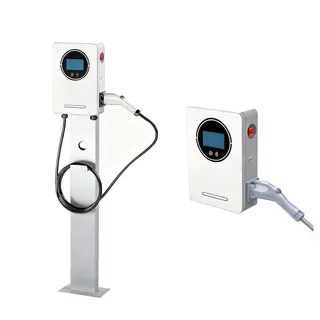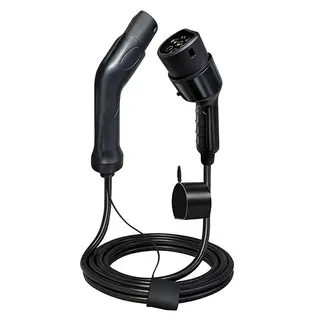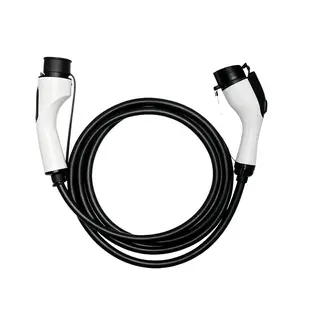In today's era of growing environmental awareness, electric vehicles (EVs) are rapidly becoming the darlings of global transportation. From city streets to highways, more and more drivers are choosing electric vehicles as their means of travel. However, with the widespread adoption of EVs, a key question gradually emerges: how to charge electric vehicles quickly and efficiently? This is not only related to driver convenience, but also one of the critical factors determining whether electric vehicles can fully replace traditional fuel vehicles. This article will explore in depth the two core elements that affect EV charging efficiency, input voltage and charging current, and how they jointly shape the future of EV charging.
Input voltage, as the name suggests, is the voltage provided by an external power source (such as the grid or solar panels) to the EV charger. This seemingly simple value plays a crucial role in the EV charging process. It directly affects the output voltage of the charger, which in turn determines the intensity of power the EV battery can receive during charging.
To meet charging needs in different scenarios, EV chargers are divided into three main levels, each with its specific input voltage range and application scenarios.
Level 1 chargers are the most basic charging equipment, using standard 120-volt AC outlets. These chargers are typically installed in home environments, providing the most basic charging service for EVs. Due to their lower input voltage, Level 1 chargers have relatively slow charging speeds. For users who do not frequently travel long distances, Level 1 chargers can provide sufficient power overnight, meeting daily commuting needs.
Level 2 chargers are currently one of the most popular charging devices on the market. They use 208/240-volt AC power; in the United States, 240 volts is typically used in home scenarios, while 208 volts is more commonly applied in commercial locations. In Europe, Level 2 chargers have a wider input voltage range, including both 230-volt single-phase and 400-volt three-phase types. These chargers can fully charge EVs in a relatively short time and are widely used in homes, workplaces, and public charging stations. For example, the Injet Blazer Level 2 home charger and Injet Vision EV charging station are common Level 2 chargers on the market, capable of providing sufficient power to EVs within a few hours, meeting users' daily usage needs.
For users who require fast charging, DC fast chargers (DCFC) are undoubtedly the best choice. These systems typically use three-phase 480-volt AC circuits, but they convert AC into DC and deliver it directly to the EV battery. This efficient charging method can charge an EV battery to 80% in just 30 minutes, making it an ideal choice for highway rest stations and commercial applications. The Injet Ampax Level 3 fast charging station is a typical DC fast charger, capable of providing rapid charging services to a large number of EVs in a short time, greatly improving EV usability.
With the continuous development of EV technology, manufacturers have gradually realized that increasing input voltage is key to accelerating charging speed. The traditional EV voltage architecture is 400V, but in recent years, the 800V architecture has gradually emerged. The design cost of 800V architecture is higher, but its advantages are obvious. First, higher voltage means lower current, which not only reduces heat generation, lowers the burden on battery cooling systems, but also reduces the risk of thermal runaway. Second, lower current allows charging cables to be thinner, making them easier to handle. In addition, the 800V system means that internal cables and electrical components can be thinner and smaller, thereby reducing the overall vehicle weight, which is crucial for heavy EVs.
Charging current is another key metric for measuring EV charger performance. Charging current, measured in amperes (AMPS), directly determines the battery charging speed. Higher current means more energy can be transferred within the same time, significantly increasing EV charging speed.
Level 2 EV chargers have a wide current range, from 15 amps to 80 amps. Most newer Level 2 charger models operate between 40 and 48 amps, which is sufficient to fully charge almost all EVs overnight. For home users, this charging speed is adequate for daily use. However, for commercial locations, an 80-amp Level 2 charger is more suitable. These high-current chargers can provide faster charging speeds, ideal for high-traffic areas such as shopping centers, hotels, and office buildings. For example, the Injet Swift EU series Level 2 charger provides multiple current options, allowing users to select the appropriate charger according to their needs.
Compared with Level 2 chargers, DC fast chargers (DCFC) offer even more impressive current values. These charging stations typically operate between 100 and 400 amps, allowing EVs to be charged in a shorter time. For example, a 350 kW supercharging station can provide up to 400 amps to an 800V architecture EV, restoring a large amount of energy in a short time. This high-current charging method greatly improves EV usability, making long-distance travel easier to manage.
In EV charging, power is a critical concept. Power (measured in kilowatts) is the product of voltage (V) and current (A), directly determining the total energy an EV can receive during charging. For example, a charger operating at 240 volts and 40 amps provides 9.6 kW of power. Therefore, input voltage and current are crucial in determining EV charging speed.
However, both chargers and EVs have voltage and current limits, which means charging speed is restricted by either the charger or the vehicle's maximum capacity. If the vehicle can only accept a certain amount of energy, using a higher-power charger will not necessarily speed up charging. Therefore, it is important to check the EV's specifications to ensure the charger's current matches the vehicle's maximum charging capacity. If the charger provides more current than the vehicle can handle, it will not increase charging speed and may even damage the battery.
Different types of EVs have different charging requirements. Plug-in hybrid electric vehicles (PHEVs) usually have a maximum charging rate of 32 amps, so even using a higher-power charger will not shorten charging time. For fully electric vehicles, the situation is more complex. If the vehicle's maximum acceptance is 7.7 kW or less, a 32-amp charger is generally sufficient. However, for EVs that can accept more power, using a 40-amp or 48-amp charger will achieve faster charging.
When installing EV chargers, the electrical capacity of the house or building is an important factor. Different chargers require different circuit capacities to ensure safety and functionality. For example, a 32-amp charger requires a 40-amp circuit, a 40-amp charger requires a 50-amp circuit, and a 50-amp charger requires a 70-amp circuit. Ensuring the circuit can handle the additional load not only prevents overload risks but also extends the charger's service life.
With the widespread adoption of EVs, the importance of charging technology is increasingly evident. Input voltage and charging current, as the two key factors affecting EV charging efficiency, are continuously being optimized and improved. From Level 1 chargers to DC fast chargers, from 400V architectures to 800V architectures, advancements in EV charging technology provide drivers with a more convenient experience.
However, this is only the beginning. In the future, with the development of new battery technologies and upgraded electrical architectures, EV charging speeds will be further improved. At the same time, upgrades to charging infrastructure will strongly support the widespread adoption of EVs. We have reason to believe that in the near future, EV charging speed will no longer be a problem, and EVs will become, like traditional fuel vehicles, the preferred mode of transportation.



